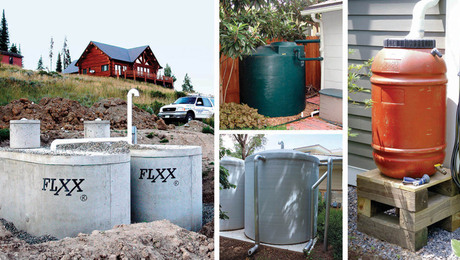I’m having a vinyl in-ground pool currently being built in my backyard. The excavators came in on Friday and started digging. We now have the 20 x 40 excavated hole (actually larger) but we also have the deep end almost filled with ground water. The pool guys are coming in tomorrow (Monday) and were supposed to start the actual pool build.
What do we do now? Can we still build the pool? What do I have to watch out for with the pool company to make sure that the pool they build will not be washed away in a couple of years? Is therre any special technique that is needed now that isn’t needed during a normal pool build? Are there any additional costs that I’m going to be hit with because of this?
I really need help with this. Thanks


















Replies
I don't know the answers, but i have a couple of questions. Will the vinyl liner be placed directly against the exposed soil? Or will there be a cushion between the liner and the soil.
I'm sorry, I thought you wanted it done the right way.
Ones Ive seen installed go on top of a sand bed, with the top edge of the liner tucked in some type of metel reglet between the copings and a concrete apron around the perimeter.
underneath the liner will be concrete and under that will be gravel, then soil
If they are a pro company that has done this before in your area, they will be prepared and have a pump with them. But a call to the office to leave a message suggesting such would not be out of order - "Hellop, I thought you'd need to know that there is some water in the bottom of our excavation and that your crew will probably need a pump come monbday morning. You would be better off staying out of the hole, because it could have become unstable at the sides and you would cause a cave in, adding to their work and possibly putting yourself in danger.
Welcome to the Taunton University of Knowledge FHB Campus at Breaktime. where ... Excellence is its own reward!
Around here they dig a hole, install either a galvanized steel or composite material that bolts together and forms the structure of the walls and supports the top edge coping, pour concrete behind that, then line the bottom portion with hand installed lite-weight concrete, and then install the liner. Not sure what the exact composition of the lite-weight concrete is (comes in a bag) but I think it uses something similar to vermiculite for aggregate.
Matt
Edited 6/5/2005 12:16 pm ET by DIRISHINME
They need to install a hydrostatic valve in the bottom of the pool (presumably in a concrete base below the liner. This valve will normally be closed, but when you drain the pool, it will be opened to allow groundwater in. Without the valve, the groundwater pressure below the pool shell will pop the shell out of the ground if the pool is drained (the water pressure of the filled pool holds it down normally.
To be honest, I've never seen this done with a vinyl lined pool, but we used to run into high groundwater in one area of Las Vegas where I build several hundred concrete pools.
During construction, they can sink a small pump in a stone pit below the shell- this will keep the hole dry during construction. We used to just shotcrete right over the the pump, and patch the hole when we plastered. The pool was filled immediately to cure the plaster, so there was no time for groundwater to seep in.
If they've been around for a while, I'm sure the pool company has run into this problem before and will know how to handle it.
Bob
Bob,
Thanks for your reply. I'll talk to the pool guys tomorrow about this.
Does the pump need to be on after the pool has been installed?
"Does the pump need to be on after the pool has been installed?"
The pump has to run until the pool is filled. Once there's water in the pool, the weight of the water negates the upwards pressure of the groundwater.
Bob
what about long term effects of the ground water around the pool? are there any different building materials that we should be considering for our vinyl pool?
Not really sure of any long-term effects, though I'm not a big proponent of vinyl pools to begin with. A concrete shell would be a better choice IMHO, but it would still need the hydrostatic valve.
Bob
You'd be surprise how many people drain a pool to do maintenance only to find it float out of the ground. An empty pool is just another boat
Had 2 pools put in, both had high water table problems, like yours. They will put in a blind drain. They fill the deep end with crushed stone , put the drain in and shape it to the specs of liner. Then they put vermiculite on top of the stone, shape that and add the liner. All this time the pump on the blind drain is running. After the water is added, they will disconnect the pump and you will have a pool. The pool water will equalize the pressure from the ground water and the pool will not heave. Mine is doing just fine and is about 75 degress right now. Guess I'll jump in now! ENJOY YOUR POOL!!!!